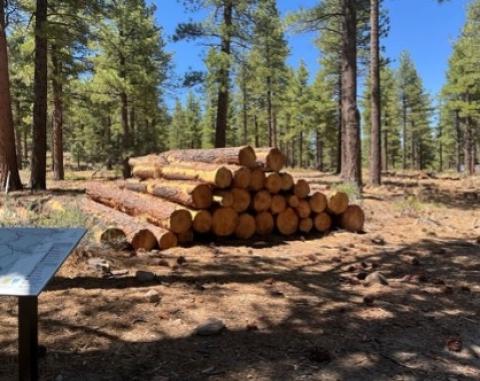GNA Spotlight - Nevada, November 2025
Submitted by Tony Parenti, Nevada Division of Forestry Partnership Coordinator
The Nevada Division of Forestry, in partnership with the USDA Forest Service under the Nevada Shared Stewardship Good Neighbor Authority (GNA) Agreement, is undertaking treatments to reduce fuels, increase forest health, and enhance riparian functionality across 150 acres in a popular recreation site. The Galena Creek Regional Park Project is situated in the Mt. Rose corridor and lies within the Nevada Shared Stewardship Sierra Front & Carson/Walker Priority Landscape. The GNA project commenced in the summer of 2024 and is anticipated to conclude in the winter of 2027.
This project will reduce fuels on land adjacent to Mt. Rose Highway, a Nevada Scenic Byway, which connects Reno to Lake Tahoe. The forests in this area have historically burned in frequent, low-intensity fires every 5 to 12 years. Over one hundred years of active fire suppression have allowed fuels to build up and create conditions that now support high-intensity, stand-replacing fires, which could occur near several communities and many structures.
Timber harvests will occur within the north treatment area of the project, aiming to reduce stand density and mitigate dwarf mistletoe to support stand health. On steeper slopes and rocky ground, hand thinning and piling or chipping will be implemented. The southern treatment area encompasses a significant portion of steeper slopes, but remains a high priority for treatment due to its proximity to homes and other structures. Treatments will also include cable yarding, hand thinning and piling, and prescribed burning. This project will also accomplish 800 meters of ground vegetation management treatment to reduce conifer encroachment and improve the health of Galena Creek's riparian areas and adjacent uplands. The Davis Fire in September 2024 burned through much of the southern project area, necessitating changes to planned treatments, including reseeding and herbiciding, which are funded by the Davis Fire Restoration Project under the same GNA agreement.
To learn more, contact Tony Parenti.
